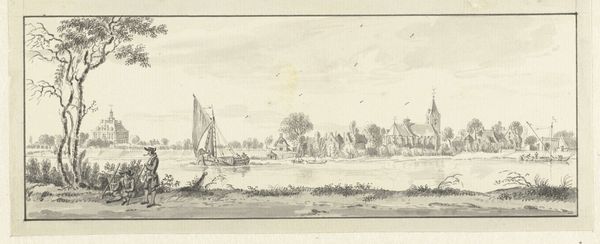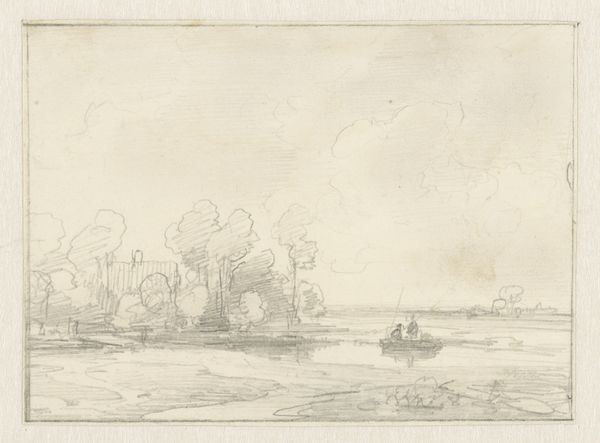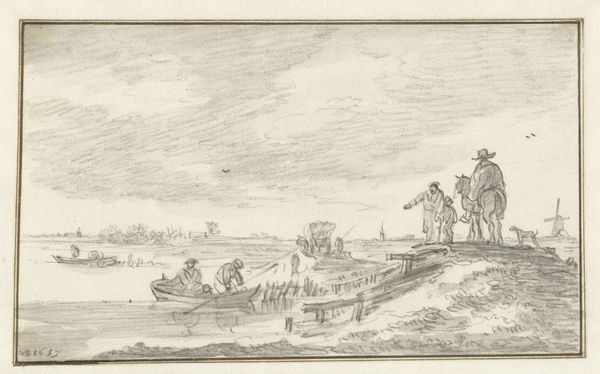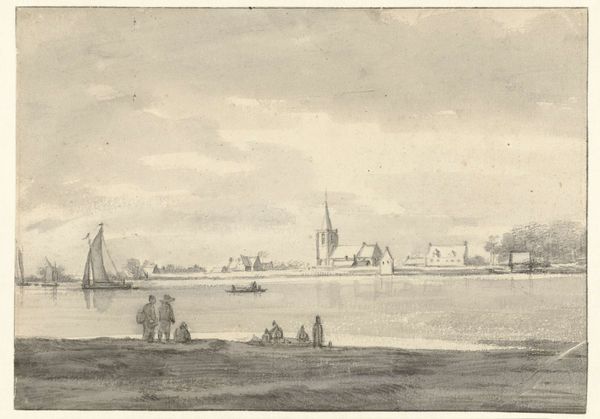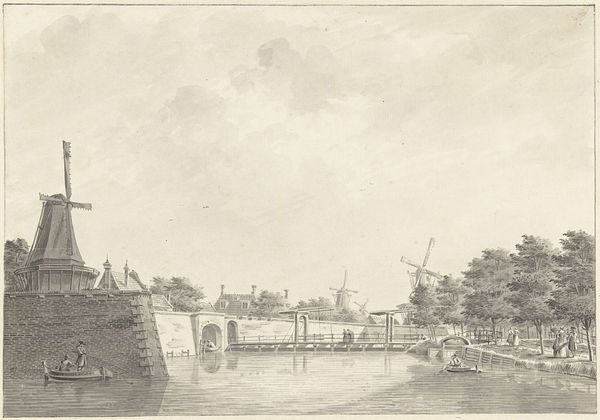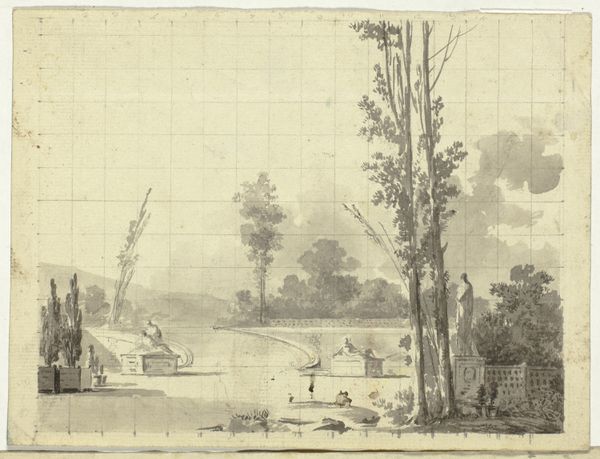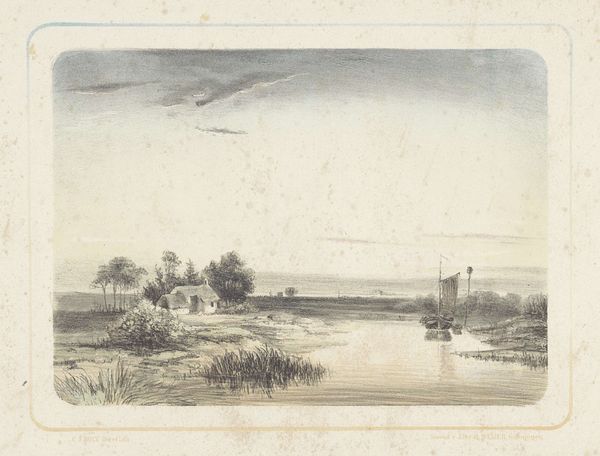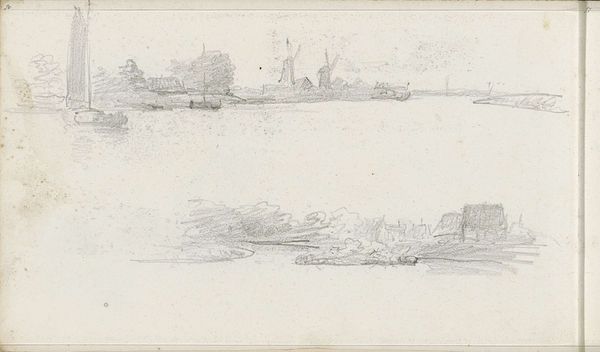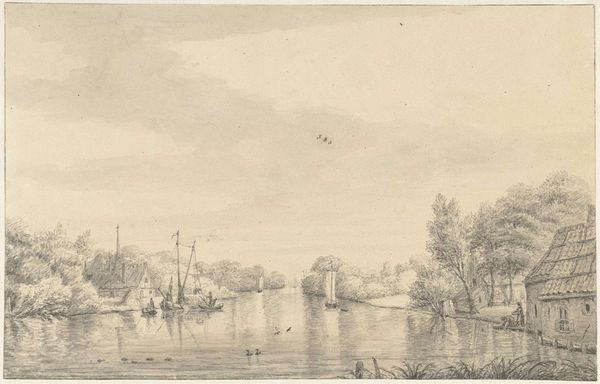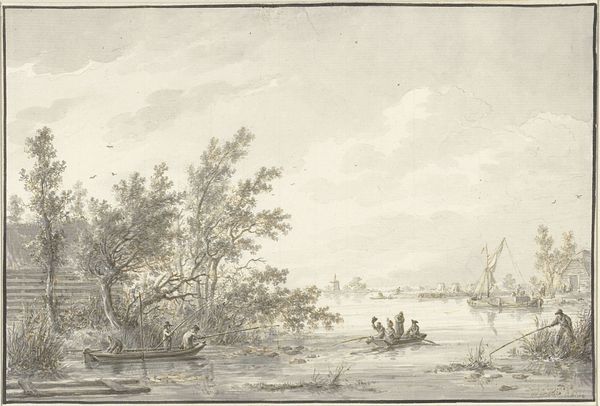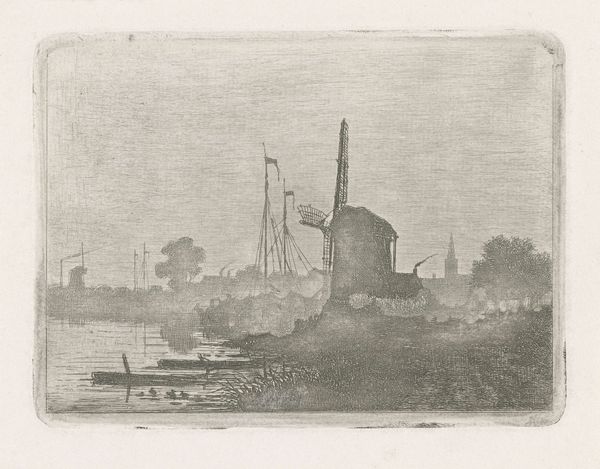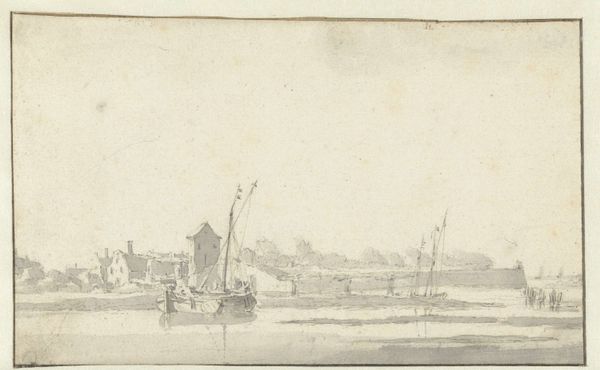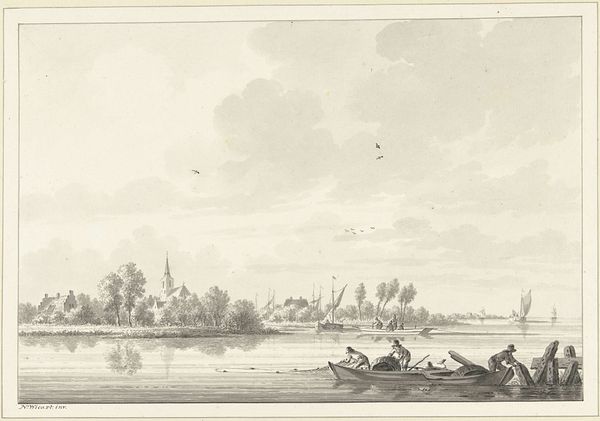
drawing, paper, pencil
#
pencil drawn
#
drawing
#
dutch-golden-age
#
pencil sketch
#
landscape
#
charcoal drawing
#
paper
#
pencil drawing
#
pencil
#
realism
Dimensions: height 193 mm, width 311 mm
Copyright: Rijks Museum: Open Domain
Editor: Here we have "River between trees and meadows," a drawing by Jacob Esselens, created sometime between 1636 and 1687 using pencil on paper. The monochromatic palette and serene landscape create such a tranquil, almost melancholic mood. How do you interpret this work? Curator: It's a compelling landscape, isn't it? To me, this drawing invites us to consider the relationship between the Dutch Golden Age and its colonial ventures. These seemingly innocent landscapes were, in effect, made possible by the economic prosperity generated through global trade and, yes, colonial exploitation. Consider how the focus on local Dutch scenes might obscure the broader, often brutal realities that funded this era. Does the emphasis on a peaceful countryside perhaps serve as a form of ideological distraction? Editor: That's a perspective I hadn't considered. The tranquility seemed so straightforward, but situating it within the context of Dutch colonialism adds a layer of complexity. So you're saying that these idyllic scenes potentially masked the exploitation happening elsewhere? Curator: Precisely. Look at how the river facilitates trade and transportation, a direct link to larger economic systems. While Esselens captures the beauty, who benefits from this prosperity and at what cost? The labourers, enslaved peoples, and exploited communities who contributed to the Netherlands' wealth are conspicuously absent here. This absence becomes a powerful statement in itself, prompting us to question whose stories are being told and whose are being silenced. Editor: It's a sobering thought, the silence within the image speaking volumes. I'm now seeing the drawing not just as a landscape, but as a historical document that reveals both what is present and, importantly, what is missing. Curator: Indeed. And that tension between representation and absence is where critical engagement begins. Editor: Thank you. I’ll definitely look at art from this era with a new perspective now.
Comments
No comments
Be the first to comment and join the conversation on the ultimate creative platform.
